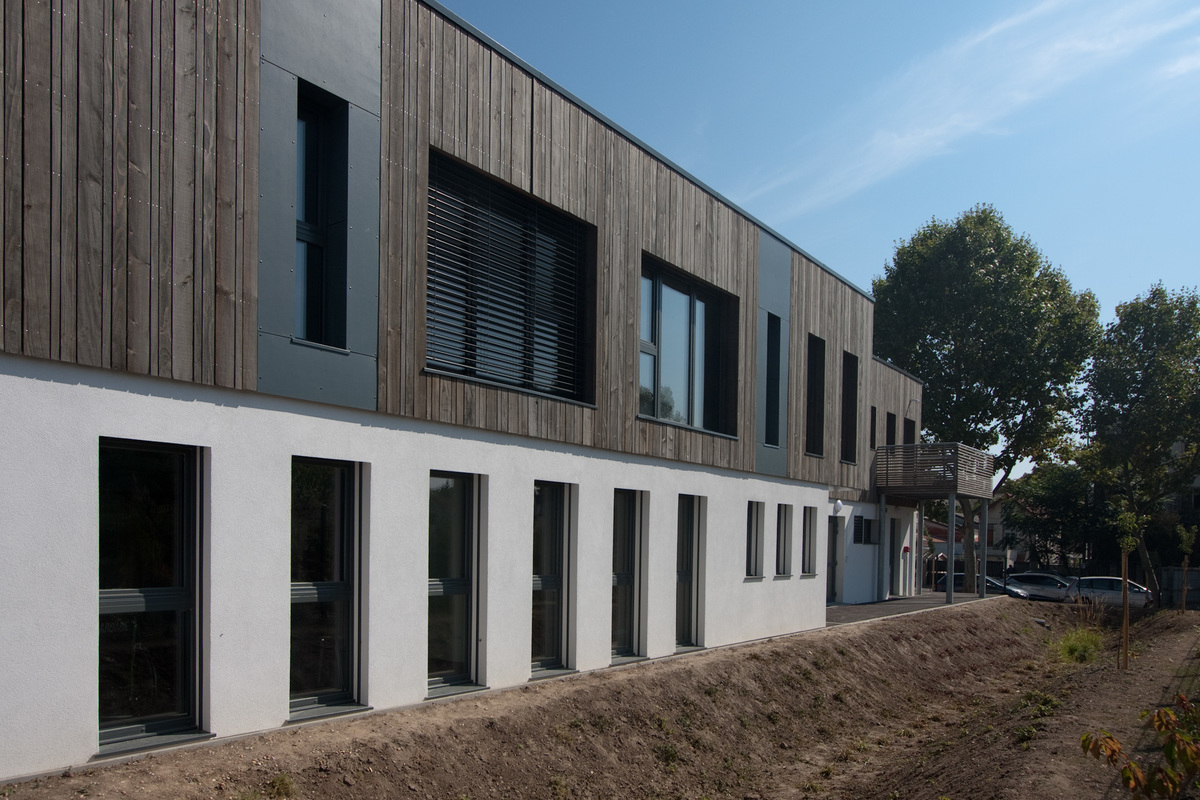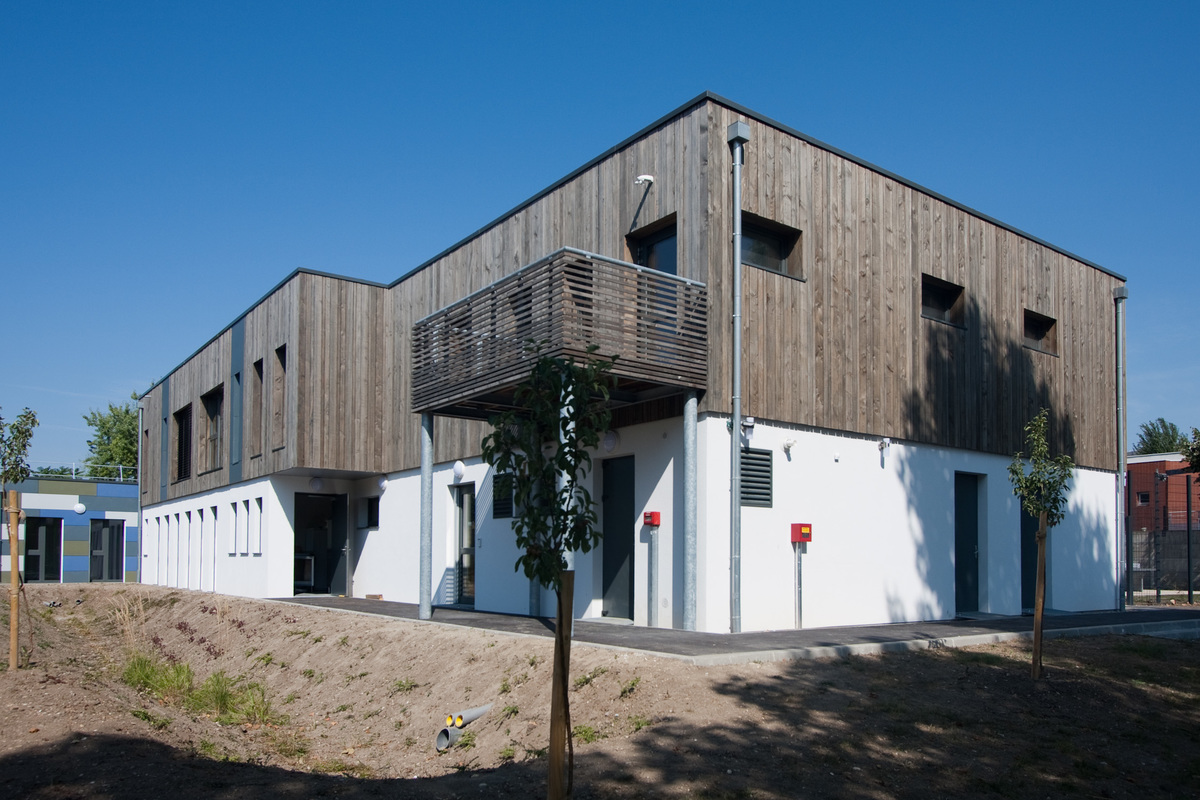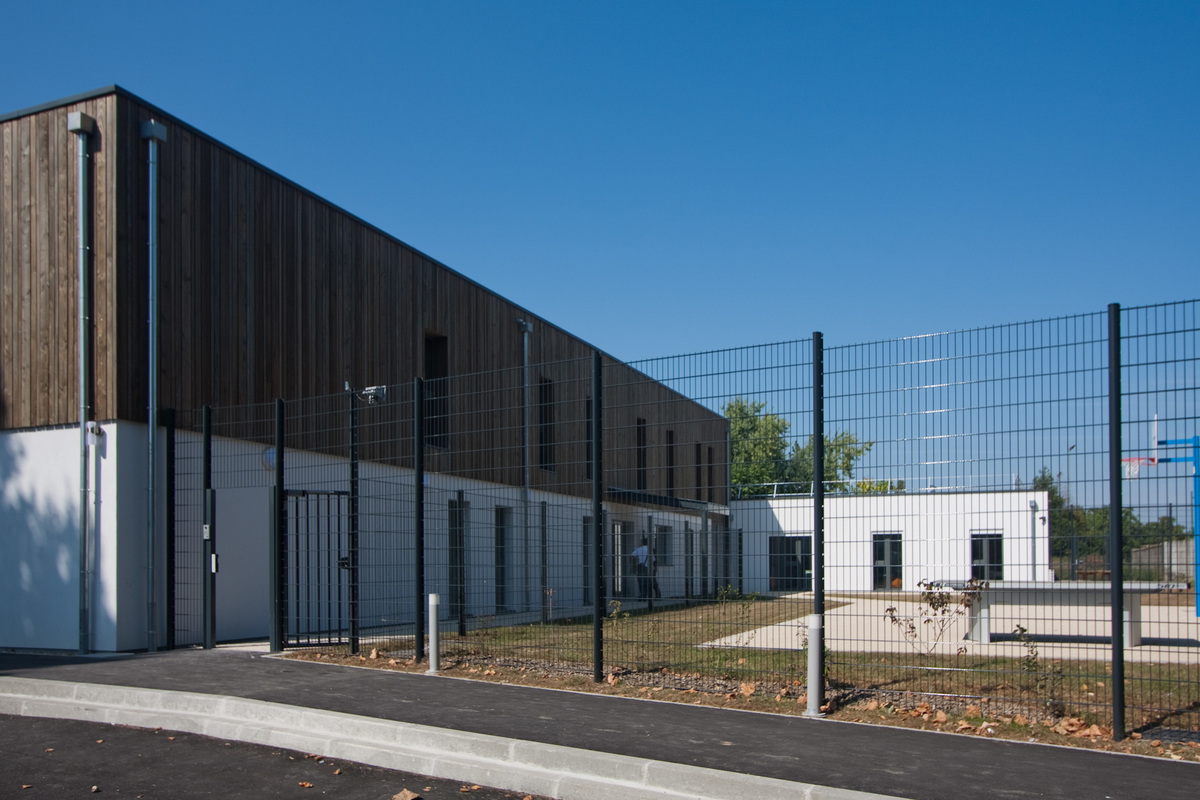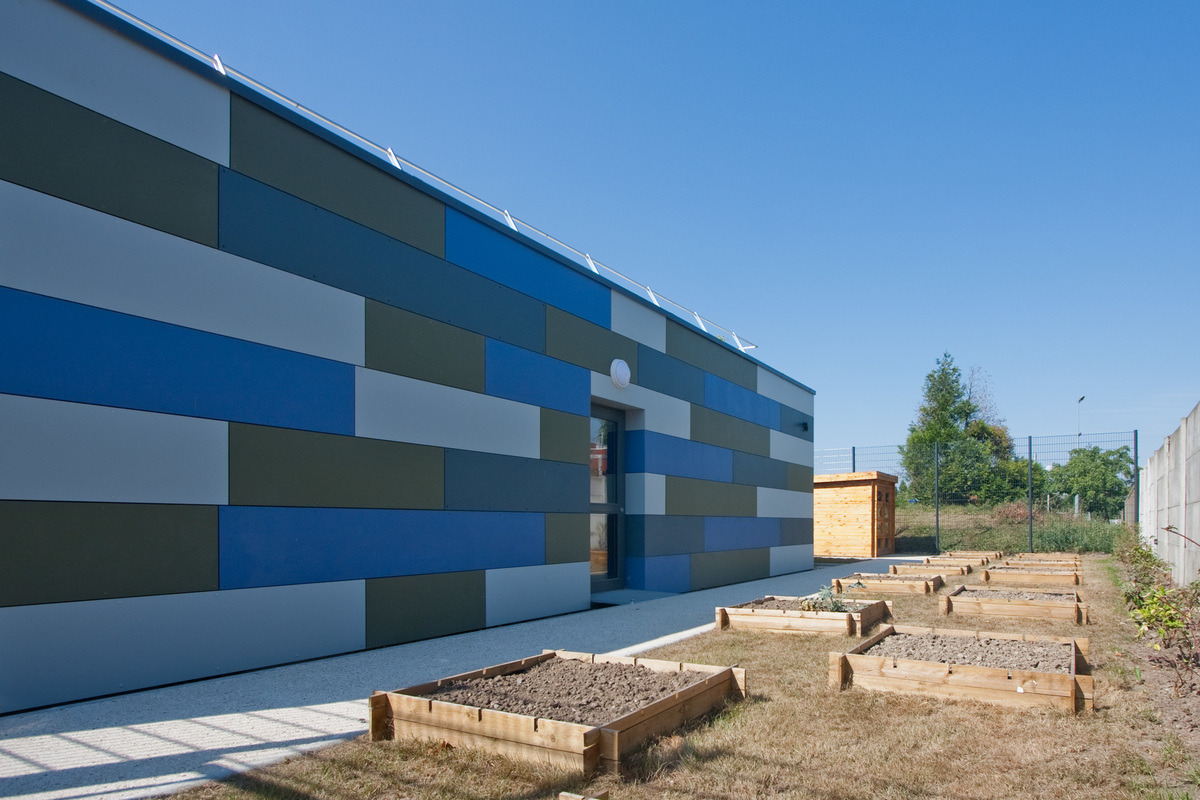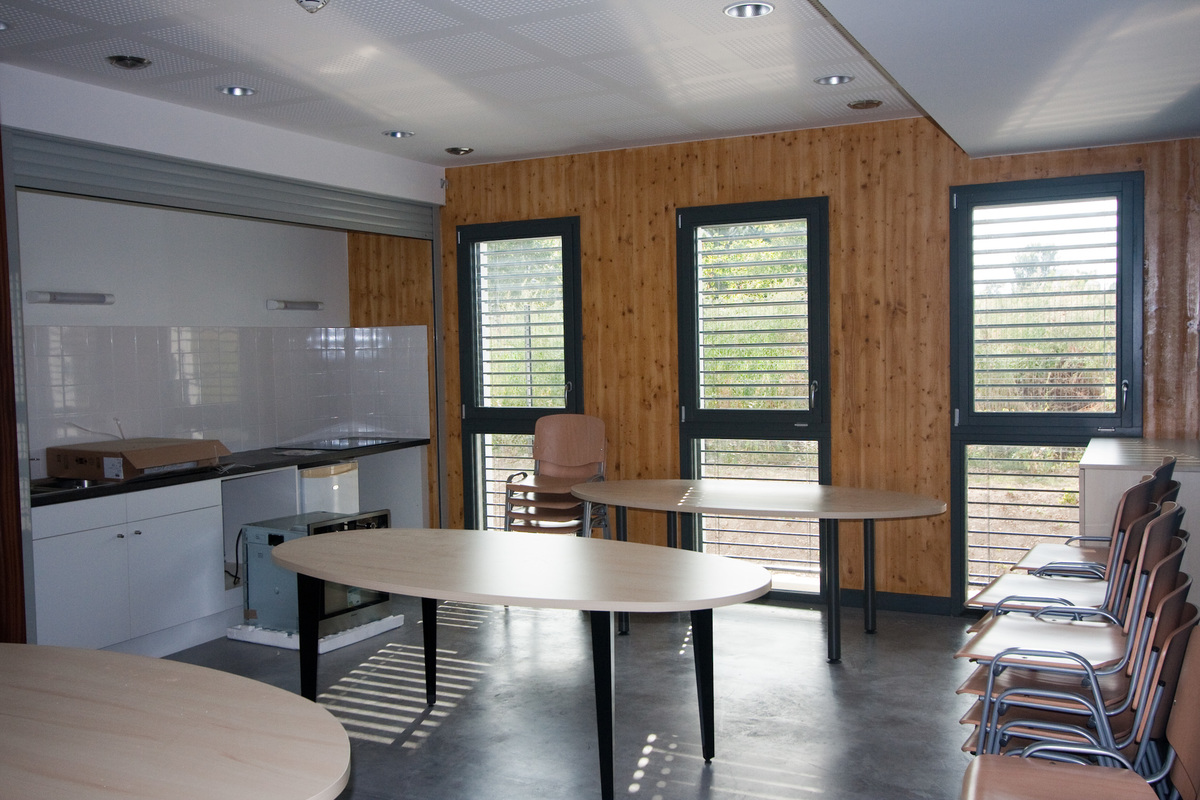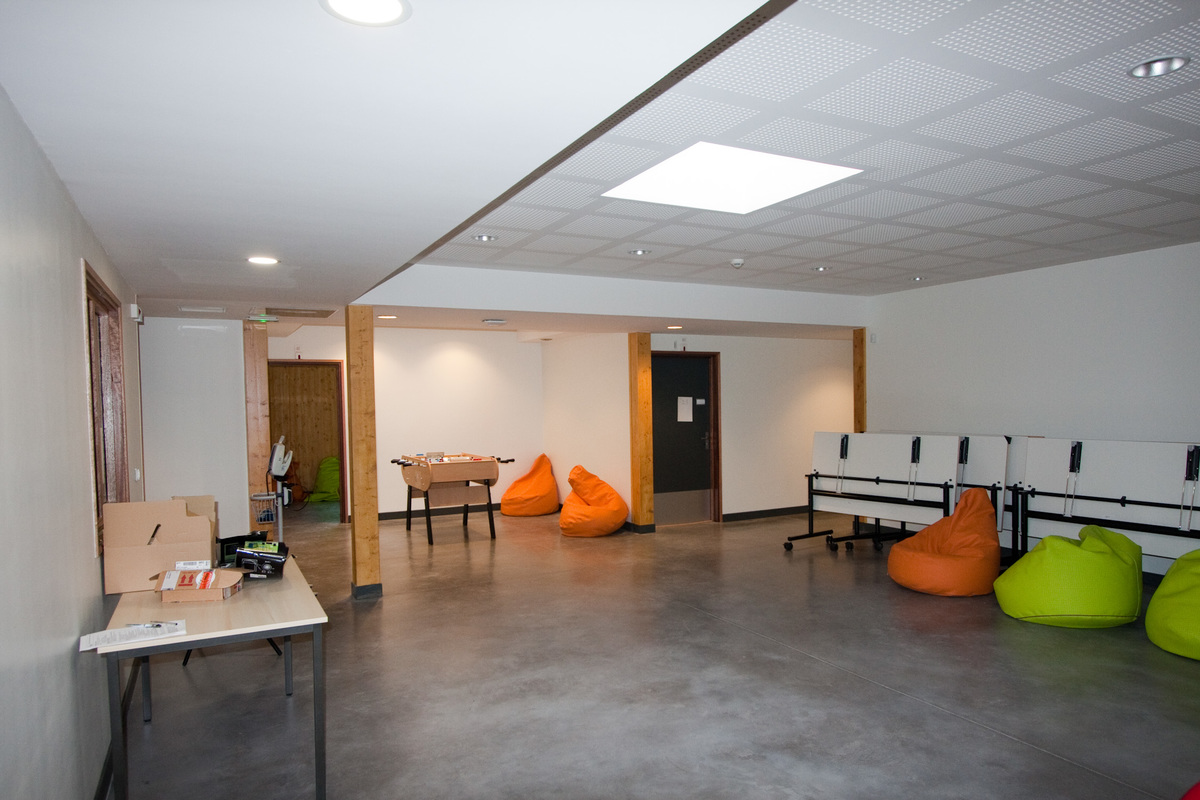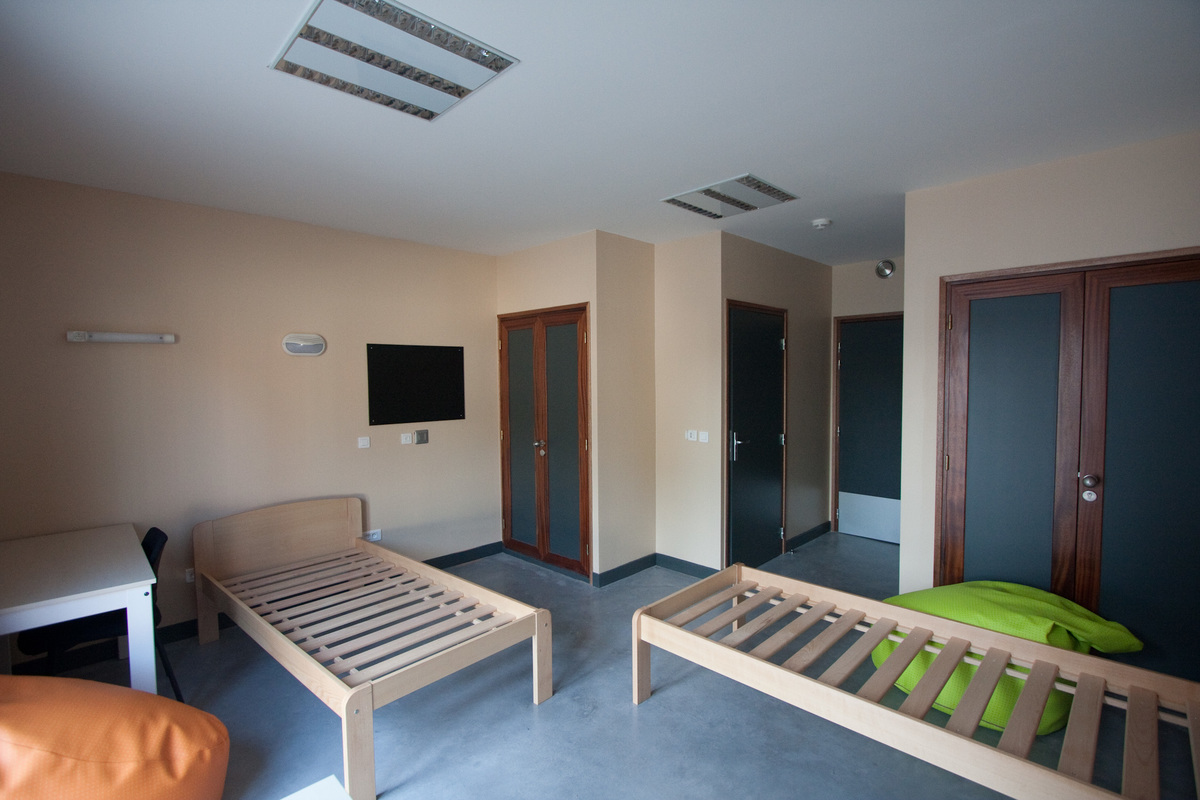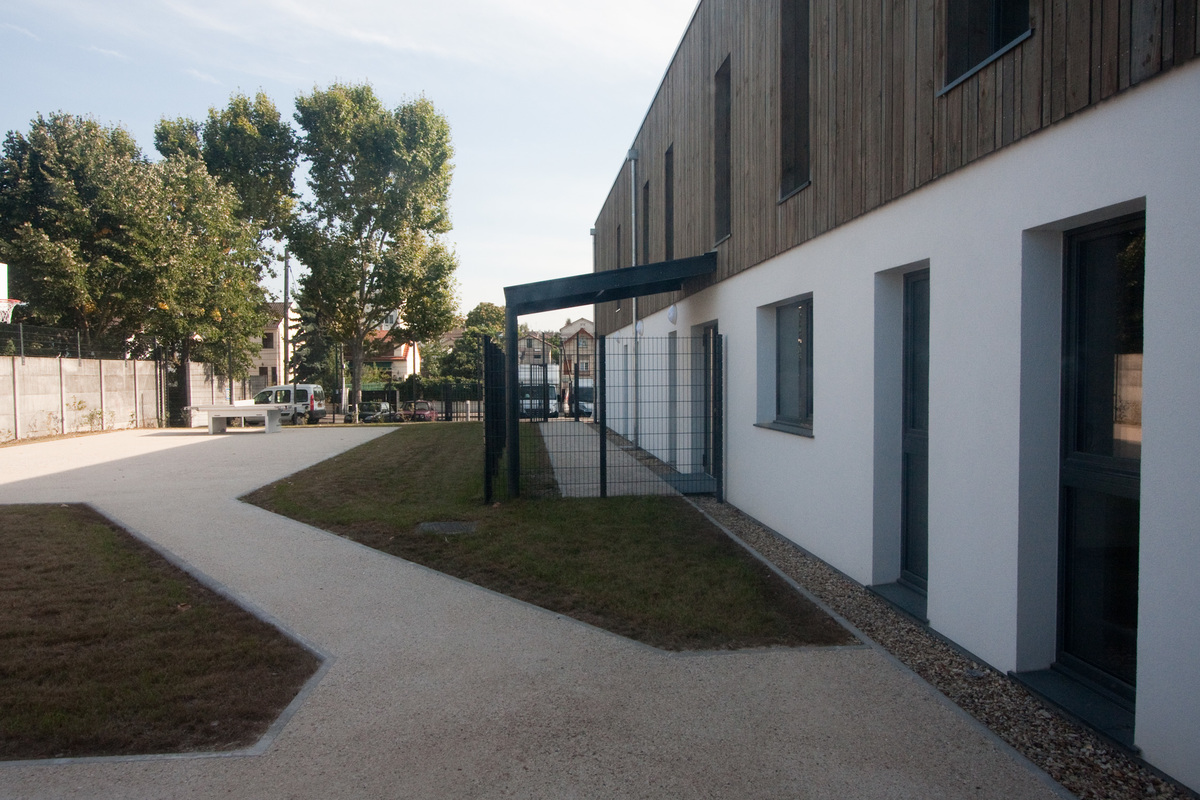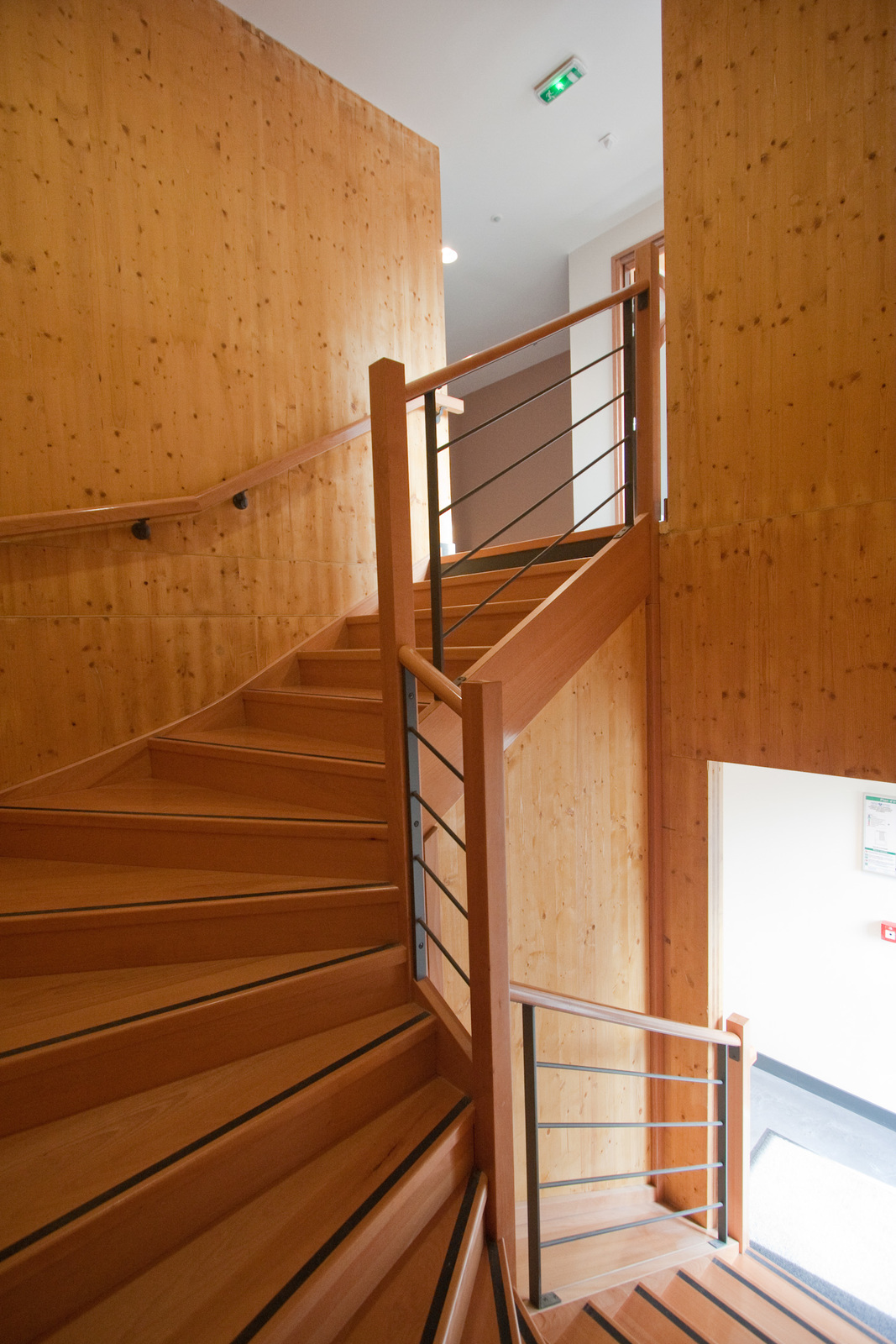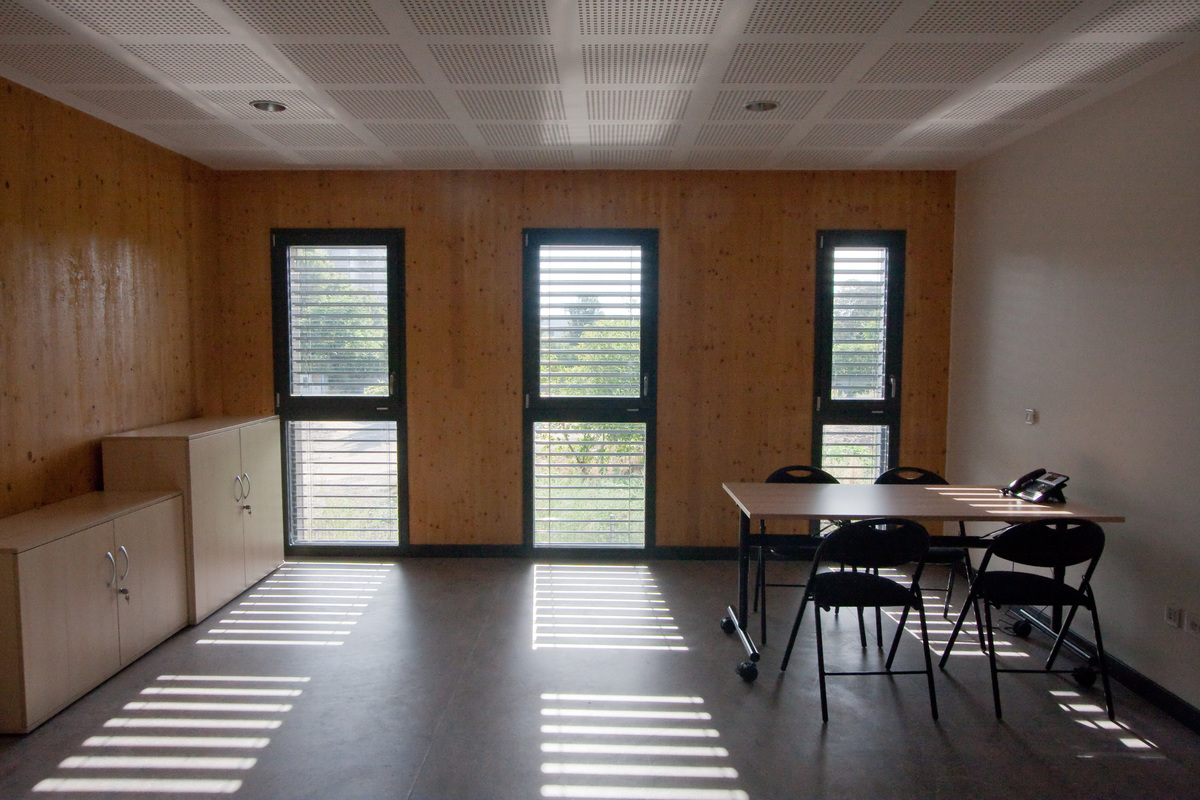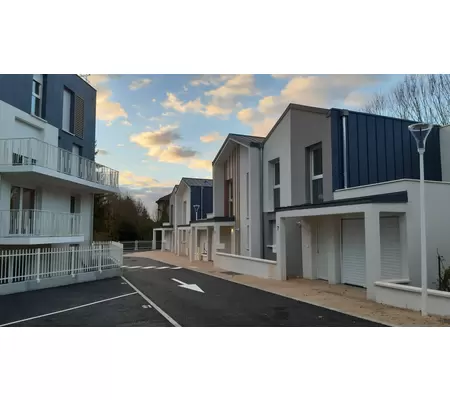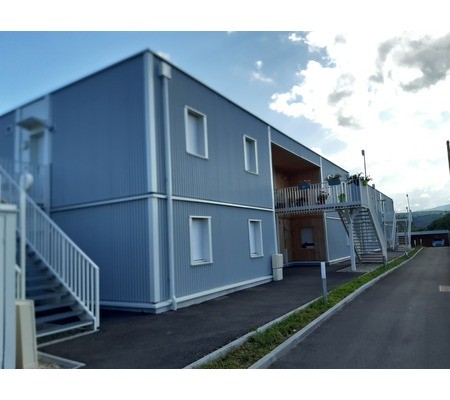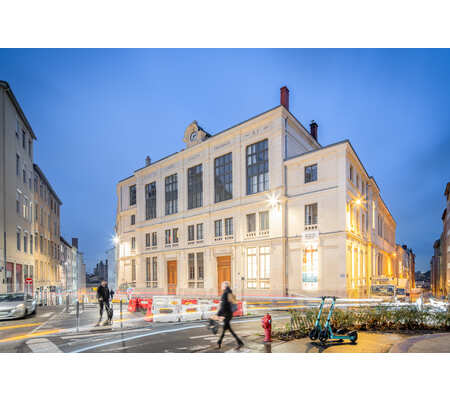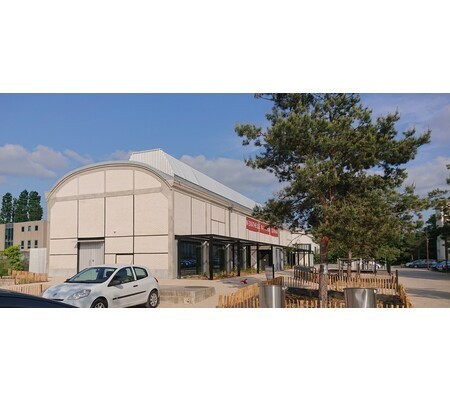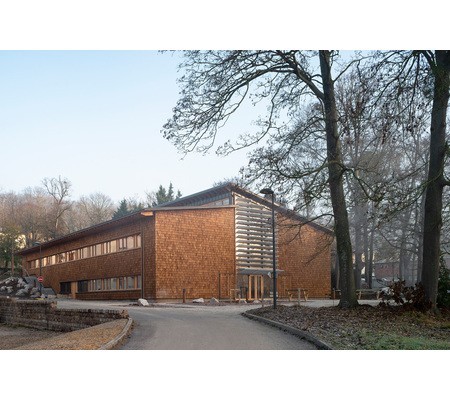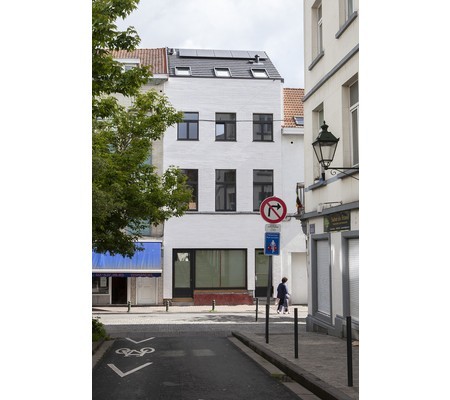The Astrolabe
Last modified by the author on 18/06/2018 - 15:50
New Construction
- Building Type : Public or private hospital
- Construction Year : 2016
- Delivery year : 2016
- Address 1 - street : 178 Rue des Renouillers 92700 COLOMBES, France
- Climate zone : [Cfb] Marine Mild Winter, warm summer, no dry season.
- Net Floor Area : 1 280 m2
- Construction/refurbishment cost : 1 800 000 €
- Number of Bed : 12 Bed
- Cost/m2 : 1406.25 €/m2
-
Primary energy need
90 kWhep/m2.an
(Calculation method : RT 2012 )
Program: Construction of a passive hospitalization unit for adolescents
Area of the operation: 1000 m², heated volume: 3005 m3
Keywords: Hospital building, solid wood wall
Sustainable development approach of the project owner
The AP-HP (Assistance Publique Hôpitaux de Paris) is deeply committed to a sustainable development approach with the following lines of application of this strategy: reducing the greenhouse gas footprint, lowering energy consumption, l improvement of purchasing and waste management. The HUPNVS group (which includes the Louis-Mourier hospital) pursues, among other things, the objective of reducing its energy consumption and primarily those of fossil origin. The project to build a building to house a new hospitalization activity for child psychiatry, intended to receive and treat adolescents with social and psychiatric difficulties, has created the opportunity to consider a passive standard construction goal. The building had to contribute to reduce the environmental footprint of the AP-HP and improve the quality of life at work of the staff as well as the care of the patients. Three other targets were also included in the program: economic construction, speed of execution and low operating costs.
Architectural description
From the outset, the MOE team sought to conserve natural resources, control environmental and health impacts, and create comfortable and healthy indoor environments. The general form is relatively simple, in "T". The simplicity of the volumes, the thermal quality of the walls and the unhooked of very limited facades make this building a building both economic and passive. The technical choices of design and construction have been oriented towards a sober energy and a simplicity of exploitation, while preserving a comfortable and healthy interior environment (quality of indoor air in particular).
If you had to do it again?
Always a wooden building! Prefabrication makes it possible to complete the structure of the building in a few weeks and to work in a dry sector, sheltered. The APHP teams visited the site several times and found that the wood gave a particularly pleasant atmosphere even if it was only the infrastructure and the joinery was not yet installed. Indeed, there was not the cold and wet sensation of concrete yards. Given the shape and the varied activities of the building zones, we would use one or two more CTAs to simplify the network and the regulation of the CTA. The ECS represents a significant part of consumption, it would be interesting to provide heat recovery on the showers. Since the end of the project, solutions have appeared on the market to integrate the recovery of the showers in the slabs or to be able to integrate them in the shower screeds with reduced reservations. The flexible connections of the ventilation outlets had been banned to ensure an excellent airtightness of the ventilation network. This choice may occasionally cause acoustic problems. Even if the airtightness of the ventilation network is slightly degraded, the use of flexible connections would make it possible to solve certain problems of noise on the mouths.
Stakeholders
Contractor
Hôpitaux Universitaires Paris Nord Val de Seine - Assistance Publique Hôpitaux de Paris
Grégoire RIGAL Ingénieur Travaux – Hôpital Beaujon 01.40.87.56.45
http://www.aphp.fr/Construction Manager
Menguy Architectes
Bernard Menguy
http://www.menguy-architectes.fr/Thermal consultancy agency
Sunsquare
Pierre Baux
http://www.sunsquare.frType of market
Global performance contract
Energy consumption
- 90,00 kWhep/m2.an
- 120,00 kWhep/m2.an
Real final energy consumption
115,00 kWhef/m2.an
Envelope performance
- 0,19 W.m-2.K-1
- 0,52
More information
System for automatic recording of consumption during installation
Systems
- Geothermal heat pump
- Condensing gas boiler
- Others
- Double flow heat exchanger
- Heat Pump on geothermal probes
Urban environment
Product
Gold RX 8 TOP
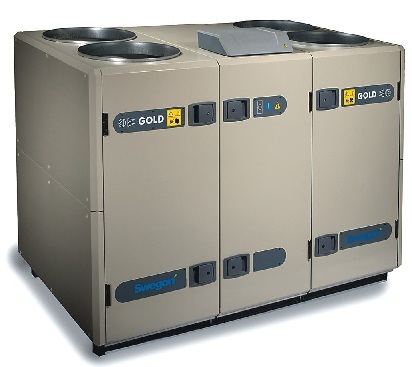
Swegon
Responsable Agence IDF / Nord 01 45 15 09 70
http://www.swegon.comGénie climatique, électricité / Ventilation, rafraîchissement
CTA double flow
WWP S 26 ID
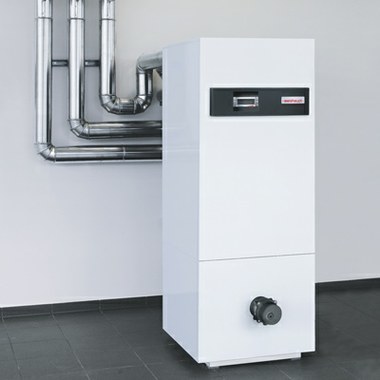
Weishaupt
WEISHAUPT - PARIS 9 Avenue de de l'Epi d'or 94807 Villejuif Tel: 01.45.60.45.62
http://www.weishaupt.fr/Génie climatique, électricité / Chauffage, eau chaude
Reversible PAC on geothermal probe. In summer, geocooling bypassing the CAP. The heat pump is connected to batteries on the start of the ventilation networks
Geothermal energy was chosen by the tablecloth of the Seine is close
Geothermal probes
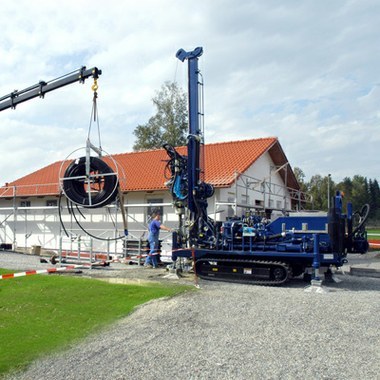
Weishaupt – Geoforage
Christophe LUTTMANN [email protected] www.weishaupt.fr
http://www.weishaupt.fr/produkte/waermepumpen/waermequelle-erde/waermequellen-erschliessungGénie climatique, électricité / Ventilation, rafraîchissement
Construction and exploitation costs
- 40 000,00 €
- 141 290 €
- 1 626 831 €
- 60 000 €
Indoor Air quality
Comfort
GHG emissions
- 8,00 KgCO2/m2/an
Reasons for participating in the competition(s)
The program of the operation initially targeted the RT2012 but the Project Manager had already expressed its desire to use geothermal energy, solid wood panels (CLT) and significant thicknesses of wood fiber insulation. The thermal resistance of the building envelope was therefore already much better than what would have been expected for a building RT2012. Regulatory calculations and simulations carried out at the beginning of the projects showed that the building was close to the heating consumption of a passive building.
The project management team therefore proposed to the APHP to improve the building to achieve the performance of a passive building, which represented several advantages:
- To be able to do without heating equipment in the building: Given the risky behavior of some patients, the risk of injury was too great with radiators. The floor heating would have responded to this risk but given the low consumption, these equipment would anyway were little used.
- Simple design and operation by not using any heating network and heat emitters in the building.
- The cost of the improvements to be expected was reasonable: Choose a double-flow CTA with excellent performance, strengthen
- By targeting the passive level, the project was able to receive ADEME aid under the PREBAT program, which covered part of the additional costs
Do not use heating networks in a tertiary building however has a sore point: The building is divided into 3 areas at the CTA. The heating is provided only by a hot battery on the fresh air outlet of each zone. The heating setpoint is adapted according to the temperature measured on the air of each return network.
Building candidate in the category

Santé & Confort

Coup de Cœur des Internautes





